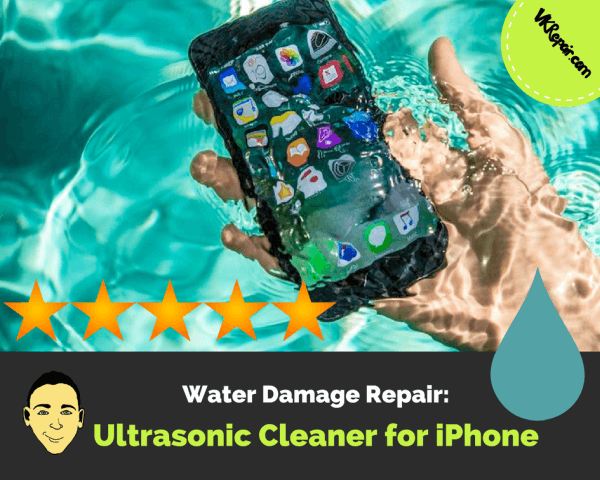In this Review:
Water Damage iPhone Repair: Ultrasonic Cleaners
We put our iPhones through a lot. They go with us just about everywhere from work, to home, to the gym. As a result, they’re bound to be susceptible to wear and tear occasionally. It’s no surprise that people usually end up getting a new iPhone every two years or so.
Sometimes, just using an iPhone on a day-to-day basis is enough to wear it out enough that you need a replacement. Cracked screens, damaged control buttons and slower speeds are all real possibilities that may become so severe that a new phone seems necessary.
However, there is one common problem that can actually be fixed.
Water damaged iPhones are a common occurrence, but this kind of damage doesn’t always mean that your phone is no longer usable. Whether you left your iPhone out in the rain, or dropped it in the toilet, the device may still be salvageable.
Due to a device called an ultrasonic cleaner, you may be able to reverse a lot of the damage that moisture causes to your iPhone’s logic board. There are a few home methods you can try to fix an iPhone that has incurred water damage, but using an ultrasonic cleaner is usually the most effective choice and will likely have your phone up and running in no time.
However, not all of these devices are created equal and it can be hard to find the best ultrasonic cleaner for electronics. An ultrasonic cleaner is more than just a cell phone water damage repair machine and, while using one may bring your smartphone back to life, these devices have a variety of other uses as well.
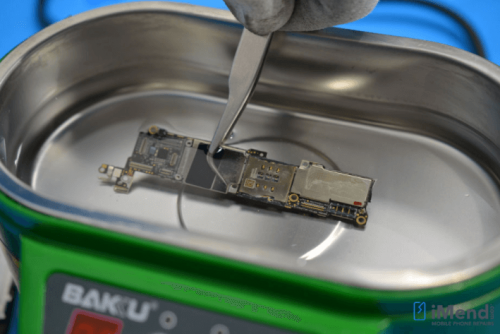
Via iMend.com
What Is Ultrasonic Cleaning
Ultrasonic cleaning is a way of cleaning water damaged items through ultrasound. High frequency electrical energy is first converted into sound waves. These waves then enter a tank or bath, and this causes rapid formation and collapse of bubbles.
The bubbles move extremely fast within the tank, causing them to pop against the surface of the object placed within the ultrasonic cleaner.
As the bubbles continue to pop, cleaning solution enters through the spaces left behind by the bubbles, and removes dirt, rust or tarnish from the small crevices of the object.
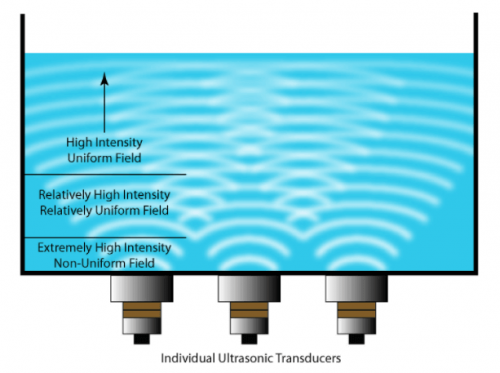
Via ctgclean.com
The ability of an ultrasonic cleaner to clean small electronic devices depends on the strength of the transducer. The transducer is the component of an ultrasonic cleaner that is attached to the tank and produces the high-frequency waves that cause the bubbles to form. This process is known as “cavitation”.
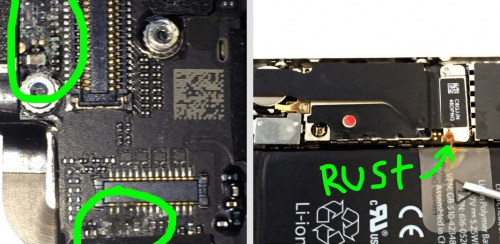 How Does Ultrasonic Cleaning Work On iPhones
How Does Ultrasonic Cleaning Work On iPhones
To truly repair water damage, you’ll need to make use of a quality ultrasonic cleaner for iPhones. Reversing water damage will require the removal of the iPhone’s logic board or PCB. This component will then have to be placed into the ultrasonic cleaner with either water, a special detergent or both.
After the ultrasonic cleaner rids the logic board of damage, the logic board must be rinsed with distilled water to remove any remaining chemical residue. Lastly, the logic boards are then left to dry, and sometimes isopropyl alcohol is used to accelerate the drying process.
Best Ultrasonic Cleaner for Electronics
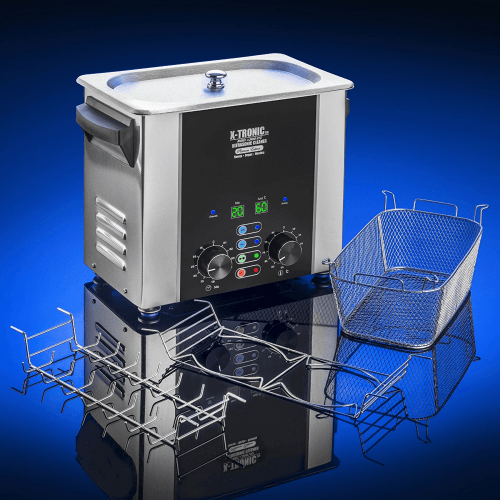
Via Amazon.com
X-Tronic Model #3000
The X-Tronic Model #3000 Ultrasonic Cleaner is a very robust cleaner with a variety of features. It has an immersion depth of 3.50 inches which is sufficient to fit most iPhones, and has a 3 liter well volume. Additionally, it has a temperature range of 0 to 80 degrees Celsius, and is powered by 2 Piezoelectric transducers.
It comes with digital time displays, digital temperature displays, a removable aluminum basket as well as a degassing function. Lastly, it also has Frequency Sweep Technology built-in, which means that it uses several ultrasonic frequencies during the cleaning process.
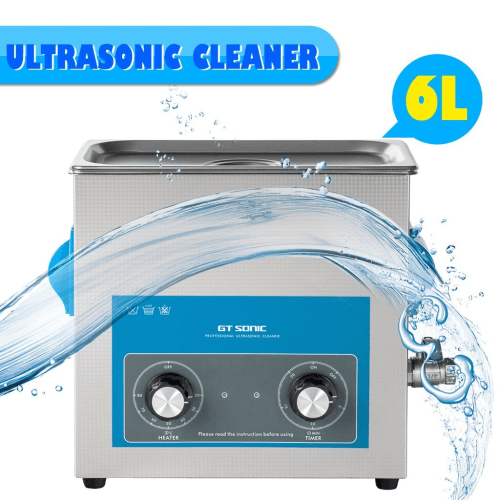
Via Amazon.com
GT Sonic 6L Ultrasonic Cleaner
The GT Sonic 6L Ultrasonic Cleaner is a much larger cleaner than the X-Tronic Mode #3000. It has a 6 liter tank with a removable aluminum basket, and can fit devices up to 5 inches in length. It has a temperature range of 20 to 80 degrees Celsius, and comes with a built-in timer.
This ultrasonic cleaner also has a heating function, a 42KHz transducer, a waterproof isolated-circuit design and can effectively clean devices with tap water alone. However, you can also add special detergent for better results when cleaning items like your iPhone.
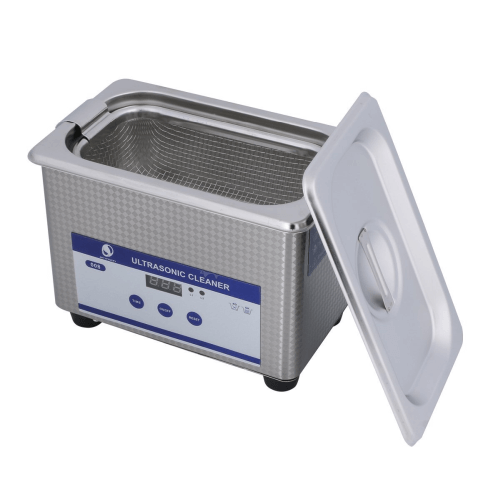
Via Amazon.com
Ultrasonic Cleaners Digital Timer
The Ultrasonic Digital Cleaners Digital Timer is the smallest of the three, and only has a 0.8 liter tank. The tank has a depth of 4.33 inches, which is still large enough to fit many different types of iPhones, and the cleaner also has a built-in timer and a reset button.
Like most ultrasonic cleaners, it can clean more than just iPhones and is suitable for a variety of other items like watches or eyeglasses. It has an ultrasonic power of 35W and operates at a single frequency of 40KHz, making it slightly less effective than the other two on the list.
Taking Your Damaged iPhone To A Professional
While you can easily purchase any of these ultrasonic cleaners and attempt to fix your own water damage, it’s still a good idea to take your phone to a professional. For most people, they just want to get the iPhone to work again so they can grab all of those photos and videos that will be forever lost if they can't get them back.
If this is the case, you should not risk doing this at home and send it to a professional: Find a iPhone water damage repair service
In order to fully rid your iPhone of water damage, it will have to be taken apart. Due to the delicate components contained in iPhones, this can be risky, even if you’ve decided to purchase an ultrasonic cleaner of your own.
Before attempting to disassemble your iPhone to rid it of water damage, consult with a technician who has experience with electronic devices. They’ll be able to ensure that nothing is damaged during the cleaning process, as well as determine if your phone is actually salvageable.
While ultrasonic cleaners can repair even severe water damage, there are instances in which an iPhone cannot be fixed and needs to be replaced.
Additionally, if you think that your iPhone is water damaged and don’t have an ultrasonic cleaner, do not attempt to charge it, or dry the components with a blow-dryer.
The heat can damage the sensitive parts of the logic board, and cause more issues that may not be able to be fixed as easily as minor water damage.

